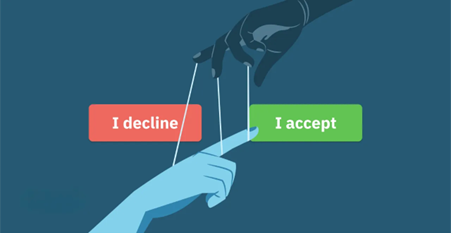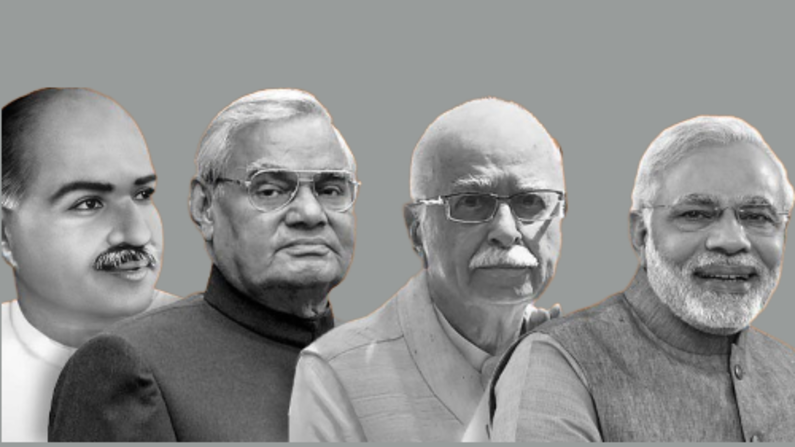Introduction
As India experiences a unique surge in e-commerce, the misleading behaviour of online retail firms has also escalated. These deceptive practices, known as ‘Dark Patterns,’ actions adopted by some e-commerce companies to force users into actions not in their best interests.
What are ‘Dark Patterns’?
Dark Patterns are like tricky road signs on the internet, designed to make you click or buy something accidentally. They’re misleading tactics used by sites to nudge you into decisions you didn’t mean to make, making online experiences feel like a tricky maze. For instance, have you ever seen a pop-up saying only a few items left or a timer pushing you to buy quickly? That’s a Dark Pattern, creating a sense of urgency to influence your choices. Understanding these sneaky tricks helps us to travel the online world more wisely.
Dark Patterns Unveiled:
In the ever-evolving landscape of online business, a silent warrior emerges – Piyush Goyal, the unsung hero behind the fight against digital deceit. As the custodian of the Department of Consumer Affairs, Goyal has created the advanced move to combat a worldwide issue faced by every internet user – Dark Patterns. This strategic initiative not only shows Goyal’s commitment but also highlights the urgency of tackling false practices in the online realm.
The Ministry has identified 13 such Dark Patterns:
1. False Urgency:
Conveying false urgency/scarcity to mislead users into immediate buys. For example, a pop-up saying “Only 2 rooms left!” or “30 others are looking at this right now!” creates pressure on customers to make hasty decisions.
2. Basket Sneaking:
Adding items during checkout without user consent. An instance could be the automatic add-on of travel insurance when a user buys a flight ticket.
3. Confirm Shaming:
Instilling fear, shame, or guilt to push users into additional purchases. An example is a flight ticket booking platform using phrases like “I’ll stay unsafe” when a user opts not to include insurance in their cart.
4. Forced Action:
Compelling users to take actions necessitating additional purchases or subscriptions. For instance, barring the user from continuing to use a product/service unless they upgrade to a higher rate.
5. Subscription Trap:
Complicating subscription cancellations, an instance that includes hiding options and asking the payment details for free subscriptions showcases the false nature of Dark Patterns.

6. Interface Interference:
Manipulating user interface to mislead and divert from desired actions. This could involve using an ‘X’ icon on the top-right corner of a pop-up screen that, instead of closing it, opens another advertisement.
7. Bait and Switch:
Advertising a specific outcome and giving an alternative outcome. For instance, a seller advertising a high-quality product at a low price but, when a buyer is ready to make a purchase, claims that the product is unavailable and offers a similar-looking but more expensive item.
8. Drip Pricing:
Not showing prices upfront or exposing them subtly. This includes not disclosing elements of prices upfront or informing them subtly within the user experience.
9. Disguised Advertisement:
Presenting ads as user-generated content, news articles, or false ads. This includes hiding the true nature of advertisements, making them appear as something else.
10. Nagging:
In the realm of Dark Pattern, another crafty tactic includes repeated trouble and irritation of users for transaction facilitation. This includes continual interactions, requests, information bombardment, options excess, or interruptions strategically designed to ease a transaction.
11. Trick Question:
Using unclear language to mislead users. For instance, phrases like “Do you wish to opt out of getting updates on our collection and discounts forever?” instead of clear-cut options like “Yes” or “No.”
12. Saas Billing:
Generating recurring payments without adequate notification. Users are not informed when a free trial is changed to a paid subscription, and the amount keeps getting debited.
13. Rogue Malware:
Using ransomware/scareware to deceive users. This includes making users believe their computer is infected with a virus and persuading them to pay for a fake malware removal tool.
Combatting Dark Patterns:
Indian Government’s efforts in opening and curbing Dark Patterns signify a historic step towards a fairer and more clear digital landscape. Additionally, the Guidelines for the “Prevention and Regulation of Dark Patterns” under Section 18 of the Consumer Protection Act of 2019 provide a complete structure for entities involved in online trade.
Furthermore, these rules apply to a broad range of entities, including sellers, advertisers, and programs systematically providing goods/services in India. Non-compliance can lead to imprisonment or fines under the Consumer Protection Act of 2019.
Implications for Digital Commerce:
The introduction of these rules has far-reaching implications for the digital commerce landscape. As India witnesses an exponential rise in e-commerce activities, settling a fair and clear online environment becomes supreme. Consequently, consumers, sellers, and advertisers alike stand to benefit from a digital land free from manipulative practices. The rules aim to foster trust, promote informed choice-making, and promote a level playing field in the online market.
Conclusion:
In conclusion, Piyush Goyal’s relentless efforts in curbing Dark Patterns not only defend the interests of customers but also shape a future where digital business thrives on clarity and fairness. As we steer the ever-evolving digital land, the fight against Dark Pattern becomes a collective endeavour for a more ethical and consumer-friendly online world.
Recommended Reading: India’s $5 Trillion Leap: The Infrastructure Revolution Unleashed
FAQs
Dark Patterns are deceptive tactics used by sites to influence user behaviour, often leading them to make unintended decisions or purchases. They create a digital maze where users may feel nudged into actions they didn’t originally intend.
Dark Patterns work by employing manipulative design and language to mislead users. For example, false urgency messages, hidden subscription traps, or misunderstanding user interface are common Dark Patterns aiming to influence user choices.
Certainly! Examples include false urgency pop-ups, hidden subscription traps during checkout, and interfaces that mislead users by emphasizing certain information while obscuring relevant details.
Dark Patterns can lead to users making unintended decisions, buys, or subscriptions. They can create a sense of pressure or misunderstanding, moving users to act against their original intentions.
The Indian Government is addressing Dark Patterns to promote clarity and justice in the online marketplace. The goal is to protect consumers from deceptive practices and ensure a reliable digital environment.
Non-compliance with the rules for Dark Patterns can lead to legal consequences under the Consumer Protection Act of 2019. This includes imprisonment, fines, or both, emphasizing the importance of tackling deceptive online practices.
Users can protect themselves by being aware of common Dark Patterns, reading carefully before clicking or buying, and reporting misleading practices. Staying informed about online tricks allows users to direct the digital land more wisely.
Piyush Goyal’s as in charge of the Dept of Consumer Affairs, efforts hold significance as they aim to create a fair and clear digital land. By addressing Dark Patterns, Goyal contributes to a safer online environment, protecting customers from manipulative tactics employed by some online platforms.






